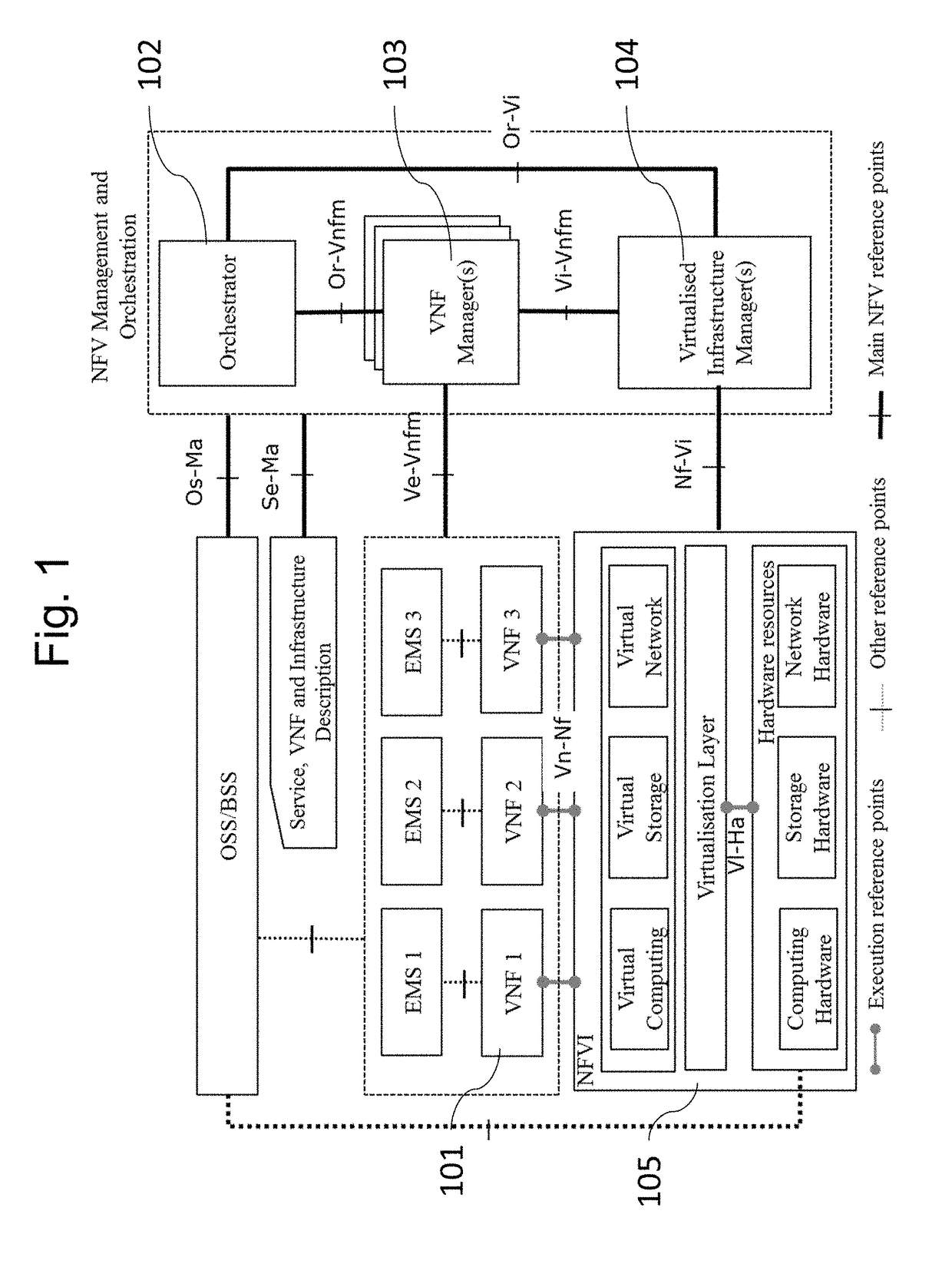Resource management in cloud systems
a resource management and cloud technology, applied in the field of resource management in cloud systems, can solve the problems of wasting resources within each cluster, application software from another vendor cannot use these resources, waste of resources, etc., and achieve the effects of reducing the amount of required resources, reducing operational costs, and saving infrastructure resources and capital expenditur
- Summary
- Abstract
- Description
- Claims
- Application Information
AI Technical Summary
Benefits of technology
Problems solved by technology
Method used
Image
Examples
embodiment 4
[0117]In this case, the signaling of the tenant-affinity information is part of a policy creation process. In this exemplary case, which is illustrated in FIG. 10, the NFVO is the issuer of the “create policy”, and the VIM is the entity keeping such a policy. Such a policy creation request (step S1001) contains information about the tenant identifier (tenant-id), the tenant-affinity parameter and the class or list of classes of VNFs ([vnf-class]) from the tenant that should follow such affinity placement requirement. The parameter notation uses square brackets “[”“]” to indicate that one or a list of values may be specified. The VIM stores such information which can be used later on to take allocation decisions. Once the policy is created, another third element, e.g., the VNFM can directly issue a resource allocation request (step S1003) which only needs to specify the resource requirements and the type or class of the VNF (vnf-class) for such a resource allocation. Then, the VIM ma...
PUM
 Login to View More
Login to View More Abstract
Description
Claims
Application Information
 Login to View More
Login to View More - R&D
- Intellectual Property
- Life Sciences
- Materials
- Tech Scout
- Unparalleled Data Quality
- Higher Quality Content
- 60% Fewer Hallucinations
Browse by: Latest US Patents, China's latest patents, Technical Efficacy Thesaurus, Application Domain, Technology Topic, Popular Technical Reports.
© 2025 PatSnap. All rights reserved.Legal|Privacy policy|Modern Slavery Act Transparency Statement|Sitemap|About US| Contact US: help@patsnap.com



